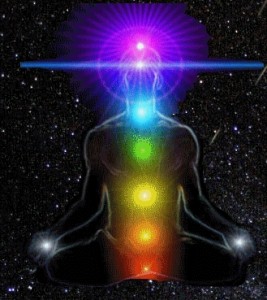Bodhi Yoga Concept
 The concept (from lat. Conceptio – understanding, system) is a certain way of understanding (interpretation, perception) of any object, phenomenon or process; main point of view on the subject; a guiding idea for their systematic coverage.
The concept (from lat. Conceptio – understanding, system) is a certain way of understanding (interpretation, perception) of any object, phenomenon or process; main point of view on the subject; a guiding idea for their systematic coverage.
Bodhi (Skt.) – enlightenment, awakening, or awareness. Derived from the verb budh, which means to awaken, realize, understand.
Yoga is a system of practices of spiritual and physical perfection, i.e. art and technology of holistic psychophysical self-improvement. The word “yoga” comes from the Sanskrit root yodge, which has many semantic meanings: “control”, “exercise”, “curb”, “connection”, “unity”, “harmony”, “union”, etc.
Bodhi Yoga: the art of enlightenment (a scientifically based harmonious system of practices for the holistic self-improvement of a human being).
The concept of Bodhi Yoga in a simplified form has the following structure: idea – goal – tasks – principles – rules – methods – means.
A distinctive feature of the practice is the conscious application of universal, scientifically sound and highly effective methods of working with the body, emotions and consciousness to achieve an enlightened state, when all negative clouded states at the level of the physical body, emotions, desires, thoughts, concepts, perception as a whole are eliminated.
The main idea of bodhi yoga is to live and improve while enjoying, following joyful thoughts, desires and emotions, being in a state of internal and external harmony. In bodhi yoga, any form of obscured state of the body or psyche is unacceptable. With any type of training and everyday activity, strive to experience a wide range of deep and at the same time refined, enlightened, and then enlightened perceptions.
Enlightened Perceptions:
1) actually illumined perceptions (EPs), including illuminated background (PF) – pleasure, joy, sympathy, tenderness, devotion, openness, etc.
2) physical experiences (AF) and various types of physical pleasures, pleasant sensations in the body: hardness, goosebumps, heat, heat, vibration.
3) joyful desires (RJ), that is, those desires that are accompanied by anticipation.
4) illuminated discriminating consciousness.
5) clear thoughts.
Enlightened Perceptions:
1) BLISS.
2) SUGGESTION.
3) UNITY.
4) CLARITY.
5) ENERGY BODY FEELINGS.
The goal of Bodhi Yoga: THE WHOLE achievement of the illuminated, ENLIGHTENED state of the whole human being (in this case, the body transforms at the cellular level, the brain potential is revealed). Holistic ternary bio-energy-information system: physical body (hardware), energy body (electric current), spiritual or information body (software). The difference between a person and a computer is that software can change his hardware and vice versa.
The fivefold system of skandhas of Tibetan Buddhism: sensations, emotions, desires, thoughts, awareness.
Classical septenary chakra system.
Enlightenment is the experience of a clear awareness of one’s own essence, a joyful union with the Universe and an understanding of the true nature of reality.
Objectives of Bodhi Yoga:
Each topic deserves a separate many-hour explanation and practical study!
1. CLEANING (health-improving task):
– physical cleansing of toxins and toxins;
– elimination of negative (clouded) emotions and perceptions;
– purification of consciousness (from internal dialogue, from false concepts);
– purification of the subconscious (transformation of basal psychocomplexes: fear, importance, pity).
2. OPTIMIZATION (enhancing personal effectiveness):
– Creation of a reserve of strength of the physical body, psychoemotional stability and possibilities of consciousness;
– increase the capacity and power of energy channels and centers;
– harmonious adjustment of structural and functional components of the bio-energy-information system;
– increasing social efficiency.
3. TRANSFORMATION (steady enlightened perception):
– expanding the range of perception (development of energy and information sensitivity of attention);
– accumulation of experience of experiencing ecstatic illumined perceptions (Bliss, Clarity, Aspiration, Existence) and stable ASCs (for example, the experience of out-of-body experiences, lucid dreams);
– achievement of the state of Integrity or Unity (infinite expansion, erasing the boundaries of the ego).
Key principles of Bodhi Yoga:
1. The principle of working out the negative and generating enlightened perceptions.
2. The principle of conscious systematic practice.
3. The principle of regular practice of minor changes.
4. The principle of an integrated approach to practice.
Benefits of Bodhi Yoga:
1. Cleansing of any negative.
2. The state of joyful existence.




